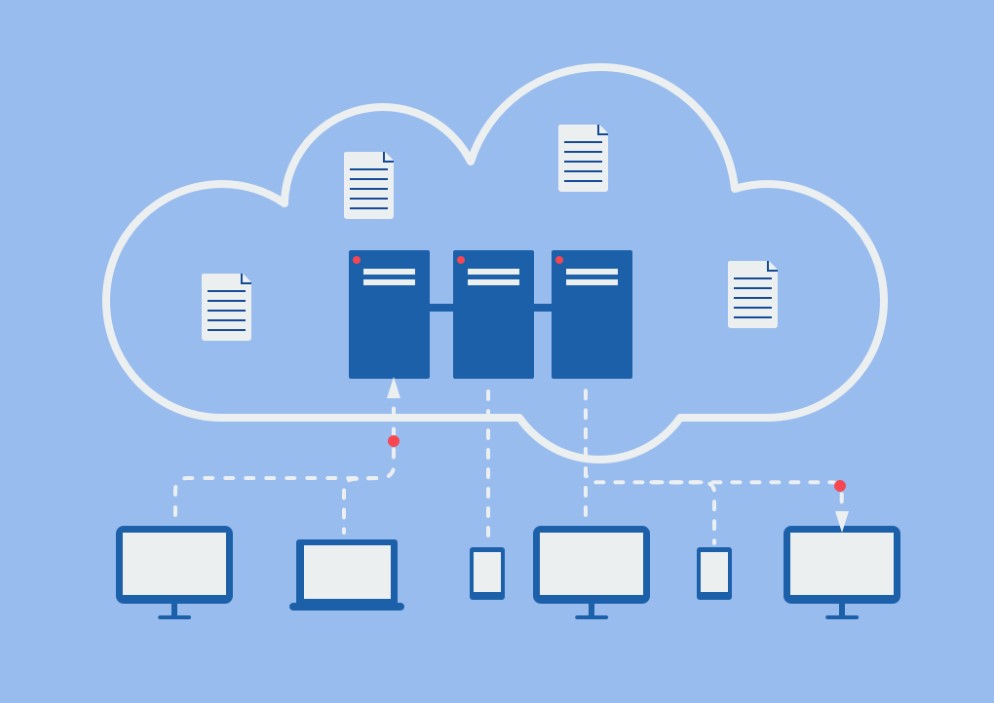
Data is the lifeblood of modern businesses. Whether you’re a scrappy startup or a sprawling enterprise, how you store, access, and protect your data can make or break your operations. And with the digital landscape evolving faster than your favorite smartphone’s battery drains, the question isn’t if you should move to the cloud, but how.
Understanding the Basics of Cloud Storage Integration
Often lost in all the buzzwords, let us begin with the question: what is data storage? Data storage, in its most basic definition, is saving digital data in a safe, recoverable format, think hard drives, SSDs, tapes (yep, still around), or more and more cloud servers.
One variation of this is cloud storage, in which your data is kept on distant servers run by third-party companies as AWS, OVHcloud, Microsoft Azure, or Google Cloud,, accessed via the internet. You effectively rent actual hardware, paying for what you use rather than owning it.
Now, including cloud storage in your current IT system? That’s where things become fascinating.
Why Integrate Cloud Storage with Existing Infrastructure?
Most businesses do not have the luxury of starting their tech stack from scratch. You already have a complex web of outdated systems, on-prem servers, and maybe that one dusty server room no one wants to touch. So why should you include cloud in the mix?
1. Painless Scalability
Want more storage? Cloud integration means you won’t have to pay for fresh gear or cope with installation downtime. Simply spin up more capacity.
2. Business Continuity
Storing vital data offline provides better disaster recovery. A fire in the office shouldn’t result in the loss of ten years of client records.
3. Flexibility for Hybrid Workforces
Cloud storage guarantees access to data from anywhere, anytime—no VPN hassles required whether your staff is distributed across cities or continents.
4. Cost Reduction
Cloud allows you to convert CapEx into OpEx. No more purchasing large storage arrays that go half-unused.
It’s about designing a hybrid environment—a best-of-both-worlds arrangement where on-prem and cloud resources cohabitate.
Step-by-Step Integration Strategy
How can you integrate cloud storage into your present system without triggering a meltdown?
Step 1: Audit Your Existing Infrastructure
Understand your system. Determine present performance measures, bottlenecks, and storage constraints. This lays the basis for a more seamless transition.
Step 2: Define Your Goals
Do you want all of the above—disaster recovery, improved accessibility, cost savings? The “why” shapes the “how.”
Step 3: Choose the Right Storage Solutions
Some cloud storage solutions are better than others. For example:
- Large-scale unstructured data and backups benefit from object storage, such as Amazon S3, or OVHcloud’s Object Storage.
- Databases and transactional systems do best with block storage, including Azure’s Disk Storage or OVHcloud’s Block Storage.
- File storage, such as OVHcloud’s NAS-HA or Google Filestore, supports conventional file systems.
Step 4: Plan Your Data Migration
Begin with perhaps non-critical data. Unless you are particularly brave (and well-insured), avoid “big bang” migrations and use safe, encrypted transmission techniques.
Step 5: Integrate and Test
This covers security protocols, user rights, and application synchronization. Before reaching full throttle, run pilot tests, model failure situations, and track performance.
Common Challenges and How to Overcome Them
Integration isn’t always a stroll in the digital park. Let’s discuss obstacles.
- Legacy Compatibility
Some older systems just weren’t designed to communicate with the cloud. Workarounds such as middleware or API gateways can assist close the gap.
- Bandwidth and Latency
Sluggish cloud storage negates the goal. Keep often accessed data local by using hybrid storage or content delivery networks (CDNs).
- Compliance and Data Security
Moving data offsite might make IT managers anxious. Select cloud providers with strong compliance credentials. OVHcloud, for example, emphasizes data sovereignty with EU data centers and ISO/IEC 27001-certified infrastructure, ideal for businesses with GDPR obligations.
- Management of Change
Let’s remember the human element. Train your team, speak early, and offer help since even the finest system fails if no one understands how to operate it.
Best Ways for Smooth Integration
Would you like your integration to go more smoothly than your Monday morning coffee routine? Here are some professional advice:
- Embrace Hybrid Models Use cloud for less sensitive or backup data while keeping mission-critical apps on-prem.
- Automate Where Possible: Tools like OVHcloud’s Cloud Connect can help to automate data syncing and backups.
- Monitor Continuously: Track performance, cost, and possible security risks in real-time with cloud monitoring tools such as OVHcloud Monitoring on Dedicated Servers.
- Start with a Pilot Program: Test integration in a smaller department before implementing it organization-wide.
Real-world example? Look at Netflix. They famously transitioned to the cloud over several years, carefully phasing out their on-prem systems without sacrificing user experience. You don’t need to be Netflix-sized to learn from that level of strategic patience.
Future Cloud-Integrated Infrastructure Trends
Cloud integration is about agility, not merely storage looking ahead. Here’s what coming:
- Edge Computing: By processing data nearer to its source, Edge Computing will lower latency. Imagine IoT devices syncing with local edge nodes before sending to the cloud.
- AI-Driven Storage Solutions: Driven by artificial intelligence, storage systems will examine consumption trends and automatically optimize where and how data is kept.
- Multi-cloud Strategies: Avoid vendor lock-in and cherry-pick the best from AWS, Azure, OVHcloud, and others.
- Zero Trust Architecture: In a cloud-centric environment, confidence is earned, not assumed, Zero confidence Architecture will change how security is implemented.
Wrapping Up
Data storage in 2025 and in the future will not be only about putting files in a digital locker anymore. It’s about smart architecture, robustness, and flexibility. Combining cloud storage with your current IT system is more about improving what already functions than replacing everything; it is not about going crazy (or losing your data) in the process.
Done correctly, this integration enables your company to expand boldly, remain competitive, and withstand any storm—whether it be a cyberattack, hardware failure, or just the next tech disruption waiting around the corner.





